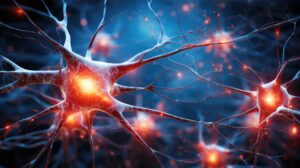When you think of acupuncture, images of fine needles gently inserted into the skin might come to mind. While the practice may seem mysterious or even mystical, modern science is uncovering clear biological mechanisms behind its effectiveness—particularly when it comes to pain relief. One of the key players in this process? Beta-endorphins.
What Are Beta-Endorphins?
Beta-endorphins are natural chemicals produced in the brain and spinal cord. They belong to a group of molecules known as endogenous opioids—meaning they are the body’s own painkillers. These powerful substances bind to opioid receptors in the nervous system to block pain signals and create feelings of well-being and even euphoria (Stefano et al., 2000).
In other words, beta-endorphins are like your body’s built-in morphine—but without the side effects or risk of addiction.
How Acupuncture Triggers Beta-Endorphin Release
Acupuncture involves inserting thin needles into specific points on the body, often along pathways known as meridians. Though rooted in traditional Chinese medicine, this practice has measurable effects on the nervous system that align with modern neurobiological understanding.
Here’s how it works:
-
Stimulation of Nerve Endings: When an acupuncture needle is inserted, it stimulates sensory nerves under the skin and in the muscles (Han, 2004).
-
Signal Transmission to the Brain: These sensory signals travel to the spinal cord and then to various parts of the brain, including the hypothalamus and pituitary gland (Ulett et al., 1998).
-
Endorphin Production: In response, the hypothalamus and pituitary release beta-endorphins into the bloodstream and cerebrospinal fluid (Han, 2004).
-
Pain Modulation: These beta-endorphins then bind to opioid receptors in the brain and spinal cord, dampening the perception of pain and producing a calming, analgesic effect (Zhou et al., 2008).
Scientific Evidence
Numerous studies support this mechanism. For example, research published in Neuroscience Letters and The Journal of Pain has shown elevated levels of beta-endorphins following acupuncture treatments (Han, 2004; Clement-Jones et al., 1980). Functional MRI scans have also demonstrated changes in brain activity in pain-processing regions after acupuncture, correlating with increased endorphin levels.
Moreover, when subjects are given naloxone—a drug that blocks opioid receptors—the pain-relieving effects of acupuncture are significantly reduced (Pomeranz & Chiu, 1976). This further supports the role of beta-endorphins and other endogenous opioids in the analgesic effects of acupuncture.
Why This Matters
Understanding how acupuncture stimulates the release of beta-endorphins bridges the gap between ancient wisdom and modern science. It also provides a compelling reason for patients and practitioners to consider acupuncture as a viable, low-risk alternative or complement to pharmaceutical pain treatments.
Especially in the midst of an ongoing opioid crisis, therapies that naturally enhance the body’s ability to manage pain are more relevant—and valuable—than ever.
Final Thoughts
Acupuncture is more than just a placebo effect or a cultural curiosity. By stimulating the release of powerful, naturally occurring chemicals like beta-endorphins, it taps into the body’s own pain control system. Whether you’re managing chronic pain, recovering from an injury, or simply exploring holistic wellness, acupuncture may offer real, science-backed relief—one needle at a time.

✨ Are you interested in getting relief from pain with acupuncture? Healing Lotus Acupuncture proudly serves Plymouth, Minnetonka, Maple Grove, Golden Valley, and other surrounding areas. Call us at 612-447-4002 to set up a FREE 15 minute consultation to see if acupuncture is right for you! Or contact us here. ✨
References
-
Clement-Jones, V., McLoughlin, L., Tomlin, S., Besser, G. M., Rees, L. H., & Wen, H. L. (1980). Increased beta-endorphin but not metenkephalin levels in human cerebrospinal fluid after acupuncture for recurrent pain. The Lancet, 316(8181), 946–949.
-
Han, J. S. (2004). Acupuncture and endorphins. Neuroscience Letters, 361(1–3), 258–261. https://doi.org/10.1016/j.neulet.2003.12.019
-
Pomeranz, B., & Chiu, D. (1976). Naloxone blocks acupuncture analgesia: Endorphin implicated. Life Sciences, 19(11), 1757–1762. https://doi.org/10.1016/0024-3205(76)90406-9
-
Stefano, G. B., Salzet, M., & Fricchione, G. L. (2000). Pain and analgesia: The role of nitric oxide, opioids, and the immune system. Brain Research Reviews, 33(1), 95–113.
-
Ulett, G. A., Han, S., & Han, J. S. (1998). Electroacupuncture: mechanisms and clinical application. Biological Psychiatry, 44(2), 129–138.
-
Zhou, W., Benharash, P., et al. (2008). Effects and mechanisms of acupuncture based on the stimulation of different points or different methods: A systematic review. Autonomic Neuroscience, 157(1–2), 1–10.

